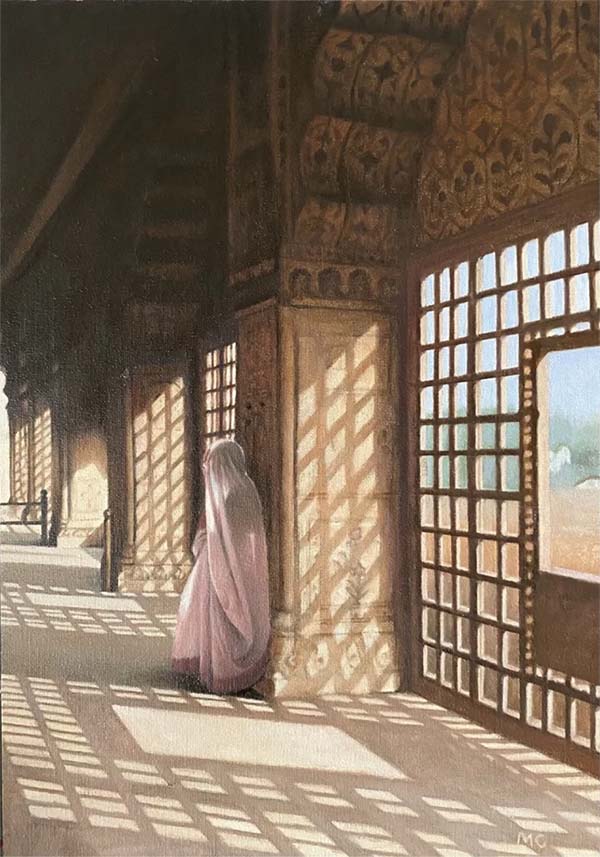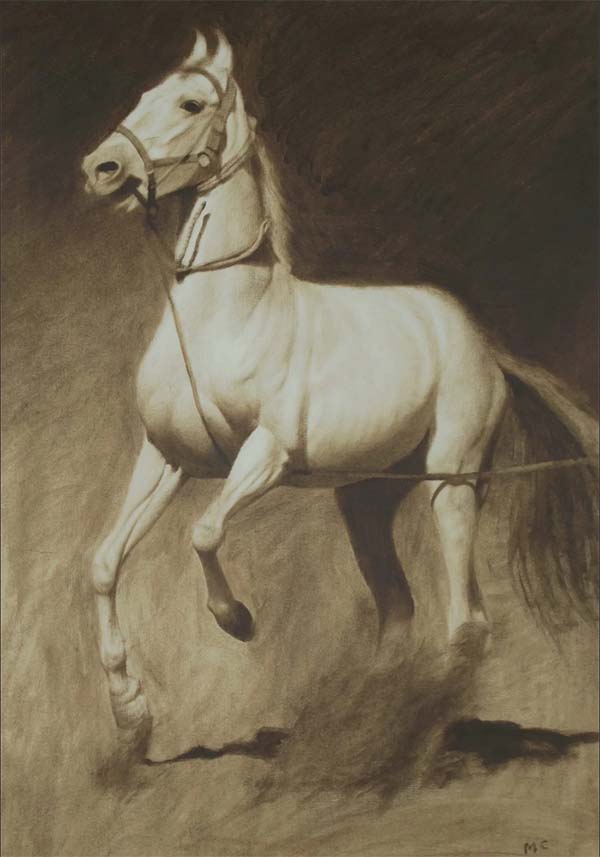Oil on canvas/board
Oil on board has been my most common surface to paint on. Often I use gesso board, unless it’s a large scale painting or commission, then I use linen, primed canvas. The purpose of the primer is to prevent oil soaking into the canvas. My painting technique is to sketch the subject matter in raw umber paint, usually using it with some white spirit as a wash to get the tonality before I start to paint. Then I apply the colour, layering as required. I block in the colour and then build up and refine the image on top.
Oil on copper
When I work on copper I re-use my old copper etching plates. This is a traditional surface dating back centuries, a technique used by Rembrandt in the 17th century where it was referred to as ‘copper as canvas’ as the most well-known surface for oil is canvas.
Preparing a copper plate:
To prepare the surface, or substrate, on copper involves detailed preparation. I abrade the surface to get a roughed up ‘tooth’ on it so the paint doesn’t slide around. Then is the interesting part – to stop the oil and copper creating a verdigris – the pigments in copper that become the green-ish patina when copper is mixed with other chemicals. If you think of the Statue of Liberty, that is a prime example of verdigris. Clearly my clients don’t want their artworks to slowly change colour over time so I need to prepare the ground surface perfectly.
When my clients purchase or commission an oil on copper they have the benefit of an etched plate on the back – there will be a blog about how the etching process works, but imagine you buy an artwork and look at the back to see another artwork there! It adds to the provenance of the piece of art, a whole other story to tell!



